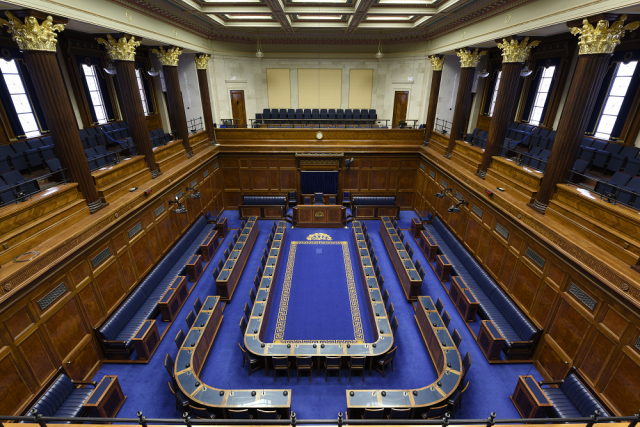The 2016-21 mandate begins in the midst of significant institutional reform.

Background
The 2016-2021 mandate marks a new era in the history of the Northern Ireland Assembly and Executive. For the first time provision has been made for an officially recognised opposition, the Executive has been restructured from 12 to nine departments and Assembly committees have been changed to reflect this.
Opposition – enhancing scrutiny?
The desirability or otherwise of an official opposition within the Assembly has been the subject of much debate, especially during the previous mandate, when the Assembly and Executive Review Committee examined the issue in detail.
Discussions around opposition in the context of the Northern Ireland Assembly most often centred on comparisons with the Westminster model and its capital ‘O’ Opposition. But this system is the exception rather than the rule in most European countries. In fact, the reality in most European parliaments is governing coalitions and opposition blocs, within which the parties might have very different opinions and strategies.
The basis for the new model is the Fresh Start Agreement of November 2015. In addition, the Assembly and Executive Reform (Assembly Opposition) Act 2016 provided for parties who choose to go into opposition to avail of the following:
- The opportunity to ask the first and second questions at topical questions to the First Minister and deputy First Minister;
- The right to chair the Public Accounts Committee; and
- Membership of the Business Committee.
However, changes to Standing Orders are required to give effect to the provisions of the Act.
Fewer departments, better government?
Like the Assembly, the shape and size of the Executive has been an area of discussion for some time, but it was only in November 2015 that legislation was brought forward to reduce the number of departments and rename others.
So what has changed? The Departments Act (Northern Ireland) abolished the Departments of Culture, Arts and Leisure; Employment and Learning and Environment and renamed others. A Transfer of Functions Order reassigned the functions of the abolished departments to the remaining nine. Beyond this, the traditional structure of one minister for one department has been retained with the nature of the political settlement in Northern Ireland probably limiting the scope for radical reform of the Executive.
Often, the key consideration in designing an Executive is political expediency rather than detailed planning as to which arrangement would deliver the most effective method of policy implementation. But has simply reducing departments and transferring functions provided a comprehensive, flexible, and efficient operating model that will enable the Executive to effectively realise its policy goals?
OECD review
The Northern Ireland Executive agreed in June 2014 to commission the OECD to conduct a strategic review of public sector reform in Northern Ireland. The aim of the review is to bring forward recommendations to maximise the impact of current reform across the Northern Ireland public sector on both the quality of public services for citizens and value for money. The draft report is expected to be published in due course.
Fewer committees, but a heavier workload?
The current structural relationship between the Northern Ireland Assembly’s statutory (departmental) committees and Northern Ireland departments is straightforward – there is one committee for each department, reflecting the need to ensure balanced representation for political parties. A move to cross-cutting committees was considered by an Assembly Committee Review Group in 2013, but the current structure was perceived to be working well and remained in place.
From May 2016, there have been nine statutory committees to reflect the new departmental structure. Excluding the Speaker, ministers and two junior ministers, there are now 95 MLAs filling 99 statutory Committee places – an almost one-to-one ratio. Members still have to fill positions on standing committees, but the requirement to sit on multiple committees is reduced.
The functions of the old departments have not been abolished – they have simply been transferred and one of the challenges for those committees that now shadow larger departments is to ensure that some subjects are not subsumed by others. There may be an increase in the use of sub-committees, something provided for in Standing Orders but not used up to this point.
The potential for a new dynamic within the Assembly now exists and it will be interesting to see how this plays out in the coming years.

